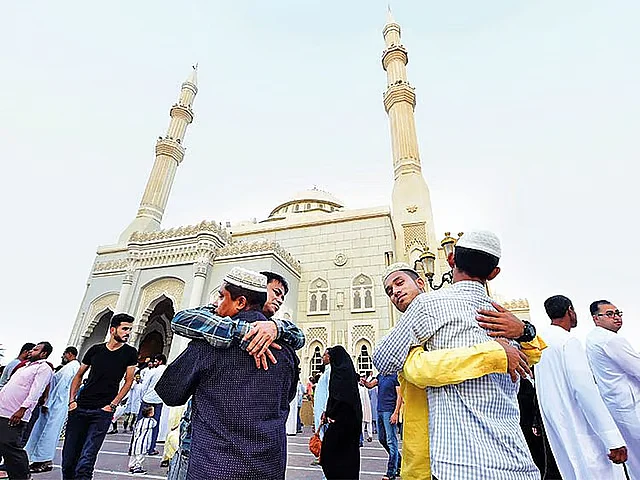Eid Al Fitr and Eid Al Adha: Understanding the essence, and difference
Twin festivals of Islamic celebration, their deep spiritual meaning, distinct rituals

Across the UAE, as residents are eagerly preparing for Eid Al Adha, also known as the “Festival of Sacrifice”, the atmosphere is filled with excitement.
Families engage in a variety of traditions — purchasing livestock for the ritual sacrifice, shopping for new clothes, and stocking up on special groceries for the festive meals.
Homes and markets alike are bustling with activity as people get ready to observe one of the most significant occasions in the Islamic calendar.
Two grand festivals
Muslims around the world observe two grand festivals each year — Eid Al Fitr and Eid Al Adha — each carrying deep spiritual meaning, distinct rituals, and a profound sense of community.
Though both are known as “Eid,” they commemorate different moments in Islamic tradition and serve unique purposes within the Muslim faith.
Eid Al Adha: The Festival of Sacrifice
Significance:
Known as the “Greater Eid,” Eid Al Adha commemorates the ultimate act of devotion: Prophet Ibrahim’s (Abraham’s) willingness to sacrifice his son, Ismail (Ishmael), in obedience to God’s command.
This event is foundational to Islamic teachings on faith, submission, and divine mercy.
God intervened, replacing the son with a ram, symbolising mercy over trial (Qur’an 37:102–107).
Timing:
Eid Al-Adha begins on the 10th of Dhu Al Hijjah, the final month of the Islamic calendar, and coincides with the Hajj pilgrimage — one of the five pillars of Islam.
Rituals and traditions:
Eid Prayer, followed by a sermon emphasising sacrifice and obedience.
The Qurbani (ritual animal sacrifice), typically of a sheep, goat, or cow, symbolising Ibrahim’s faith.
Distribution of meat: one-third for the family, one-third for relatives, and one-third for the poor, embodying compassion and equity.
Celebrated over three days, making it longer and often more communal than Eid al-Fitr.
Essence:
Eid Al Adha exalts the virtues of submission to God, sacrifice, and social responsibility. It is a solemn yet joyful festival that connects faith to action.
Eid Al Fitr: The Festival of Breaking the Fast
Significance:
Eid Al Fitr, often referred to as the “Lesser Eid,” marks the joyful end of Ramadan, the holy month of fasting, prayer, and self-restraint.
It celebrates the renewal of the soul and the completion of a month-long spiritual journey. As the Prophet Muhammad (peace be upon him) said, “For every people there is a festival, and this is our festival” (Sahih Bukhari, Hadith 952).
Timing:
Observed on the first day of Shawwal, the tenth month of the Islamic lunar calendar, Eid Al Fitr begins immediately after the conclusion of Ramadan.
Rituals and Traditions:
Eid Prayer (Salat Al Eid) at mosques or open prayer grounds.
Zakat Al Fitr, a mandatory charitable donation to purify one’s fast and support those in need (Qur’an 2:110).
Feasting, especially the first meal after a month of daily fasting from dawn to dusk.
Visiting family and friends, gift-giving, and wearing new clothes.
Essence:
Eid Al Fitr is a day of gratitude, unity, and celebration. It honors the spiritual victory of self-discipline and expresses joy through community bonding and generosity.
Both Eids embody Islam’s call to balance personal faith with communal care — one through fasting and reflection, the other through sacrifice and service.
As global events that unite over a billion Muslims, these festivals are not only acts of worship but also moments of profound human solidarity.
Sign up for the Daily Briefing
Get the latest news and updates straight to your inbox
Network Links
GN StoreDownload our app
© Al Nisr Publishing LLC 2025. All rights reserved.